Do You Need a Surge Protector for Your TV? Keeping Samsung & LG Units Safe
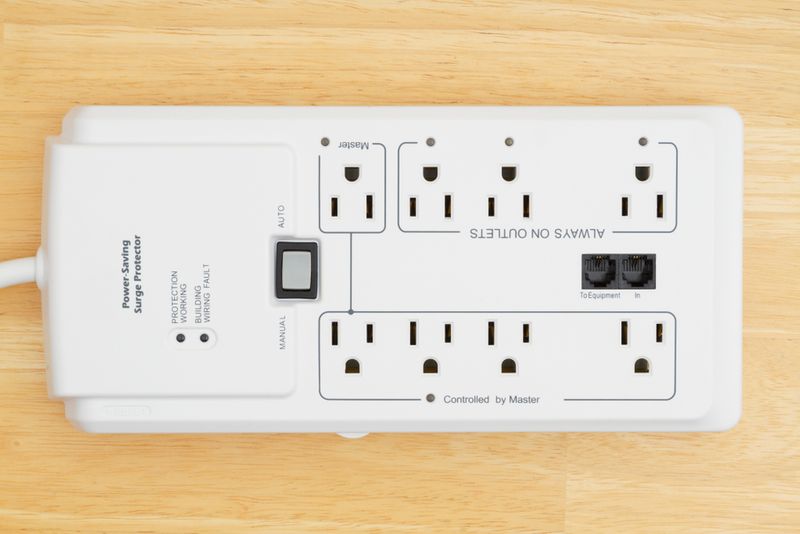
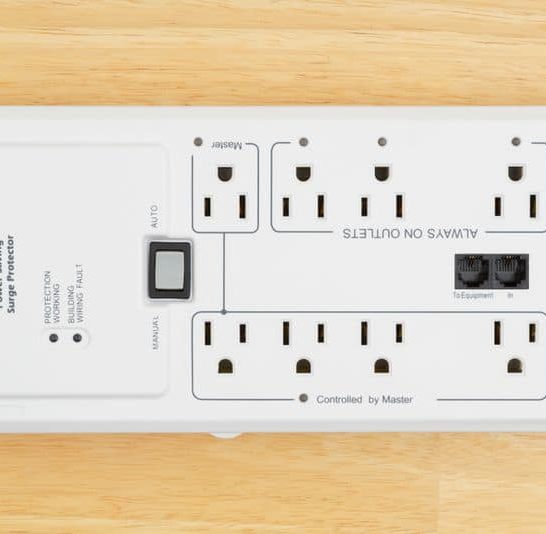
What To Know
- A surge protector is crucial for TVs as it shields their delicate microprocessors from damaging electrical surges.
- Choose a surge protector with a high joule rating, low clamping voltage, and fast response time for optimal TV protection.
- Look for surge protectors with UL ratings, indicator lights, and auto-shutoff features to ensure safety and longevity for your television.
In this article, you’ll discover why a surge protector is a non-negotiable ally for your TV’s longevity, and learn how to choose the right protector to shield your screen from unexpected voltage spikes.
Quick Navigation
What Is a Surge Protector For?
The main purpose of a surge protector is to detect any excess voltage and divert it into the grounding wire.
All surge protectors have a pin connected to the ground. This is normally the third prong found on a plug.
Typically, surge protectors use metal oxide varistors (MOVs) to absorb any excess AC voltage, allowing only acceptable levels of electric current to reach your appliance. High voltages can damage your electric wires, cables, and ultimately, your device.
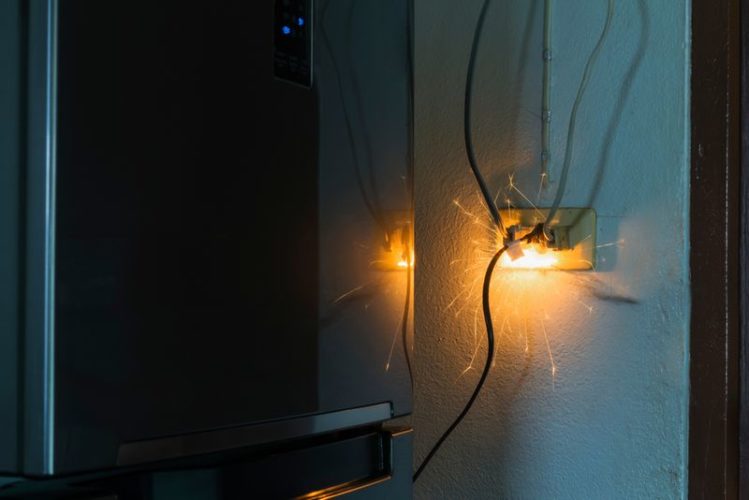
Think of the flow of an electric current like water running through a pipe. Just the same way water moves from a high-pressure point to a low-pressure point, electricity operates in a similar way.
Electricity moves from an area of high electric energy to one of low energy within the wire.
However, when this voltage increases for a minimum of at least three nanoseconds above the norm, there could be a power surge that has the potential to damage your device.
This is where a surge protector comes in to divert this excess voltage.
Do I Need a Surge Protector for a TV?
Look at it this way: if there was a power surge and it damaged all of the appliances connected to your power outlets, which of the appliances, if damaged, would pain you the most?
If your answer is your TV, then you need a surge protector.
TVs have intricate microprocessors that can easily get damaged by power surges if not well protected.
How To Choose a Surge Protector for My TV?
You may find it challenging to get a suitable surge protector for your TV at a good value.
How do you choose a good surge protector? And are there any important features that you should be looking out for?
Let’s look at the basics that you should consider when choosing a surge protector for your TV.
UL rating
The UL 1449 Underwriters Laboratories is the recognized safety standard for all Surge Protective Devices (SPD).
This rating guides the design requirements, certification criteria, and product performance testing that all the manufacturers must adhere to for surge protectors to be considered safe for consumer use.
Do not choose a surge protector that does not have a UL rating. Good surge protectors come with a UL rating determined by the Independent Underwriters Laboratories and it is displayed somewhere on the box.
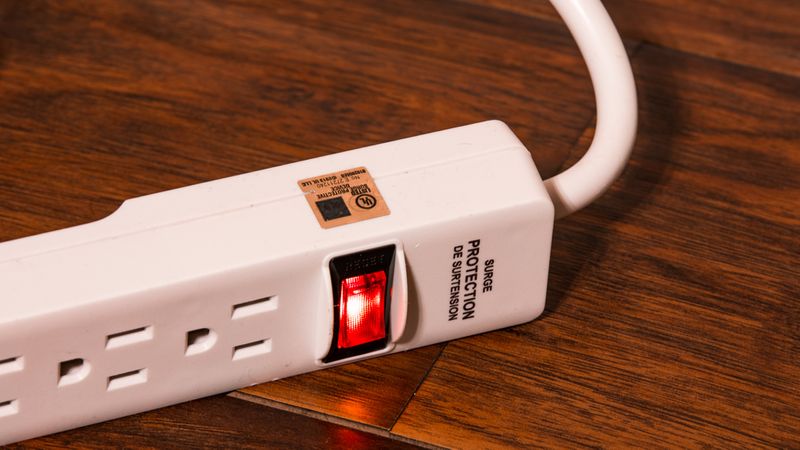
Indicator lights
Surge protectors have a limited lifespan based on how hard they work. While the surge protector might be properly diverting power surges, it is also suffering damage during the process.
As such, one important feature that it should have is an indicator light. This important feature will allow you to monitor the status of your surge protector.
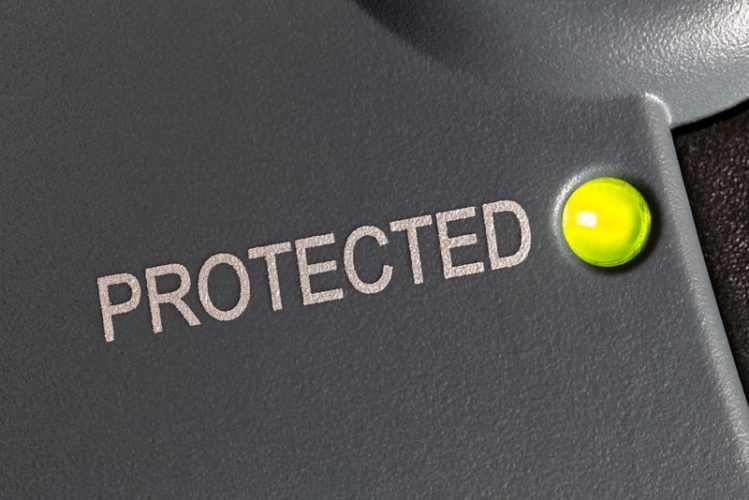
An indicator light that is on means that your surge protector is operating as it should. When you notice that the indicator light is not lit up, it may be time for you to buy a new surge protector.
Joule rating (the higher the better)
The number of joules listed represents the maximum energy the surge protector can absorb without failing. If the surge is so high that it breaches this maximum, then the surge protector is rendered useless.
Take it as a shield blocking excess energy. The higher the joule rating, the more surge voltage the protector can absorb, whether in a single event or over a series of surges before wearing out.
So if a surge protector has 400 joules of protection, theoretically, it could handle eight 50-joule hits, four 100-joule hits, two 200-joule hits, or one 400-joule hit before it is rendered useless.
A higher joule rating often indicates stronger protection and a longer lifespan. For the best TV protection, choose a surge protector that comes with a joule rating of 2500 or more.
- The Anker Advantage: Join the 55 million+ powered by our leading technology.
- Power Everything: Equipped with 12 AC outlets to power all of your household devices.
- Dual Surge Protection: PowerExtend is equipped with not one but two 4000-joule surge protectors,...
Last update on 2024-07-10 / Paid Link.
Clamping voltage (the lower the better)
The clamping voltage is sometimes called the Voltage Protection Rating (VPR).
This is a measurement of the voltage at which the surge protector will be prompted to redirect excess electricity from the plugged-in appliances to the ground connection.
This means that a surge protector that has a clamping voltage that is lower will trigger earlier and protect your television quicker. The lower the number, the less tolerance to excess voltage.
So when you compare a surge protector that has a clamping voltage of 400 with that which has a clamping voltage of 500, the latter allows a higher surge to occur before acting on the excess voltage, which can damage your TV.
A surge protector that comes with a clamping voltage that is below 400 volts should be good enough to guard your TV.
- Protect any electronic device from power surges & spikes: Surge protector with two outlets protects...
- Premium surge protection with built in tel/dsl and gold coax jacks: This surge suppressor offers...
- Safety first high joule rating conforms to UL 1449 safety standards: An integrated 12a circuit...
Last update on 2024-07-10 / Paid Link.
Response time (the lower the better)
Response time goes hand-in-hand with the Voltage Protection Rating. Response time explains the duration it takes the protector to detect a surge in voltage and react to divert the excess voltage.
Surge protectors with lower response times will activate faster and redirect any excess voltage before there is major damage to your TV. Response time is measured in nanoseconds.
For the best results, choose a surge protector with response times of one nanosecond (or less).
Auto-shutoff
Some surge protectors come with an additional safety feature, the automatic shutoff. This safety feature powers down the TV when there is a power surge or voltage spike.
This prevents electricity from reaching your TV entirely if your surge protector becomes inadequate.
Warranty and Insurance
The job of a surge protector is to absorb the brunt of excess voltage, so your television doesn’t have to. This will take a toll on your surge protector over time.
It is therefore wise to choose a model that comes with a lifetime replacement warranty, as well as insurance to cover repairs or replacement of your connected equipment, including televisions, damaged by power surges.
Understanding the Importance of Power Surges
Electric surges are sometimes referred to as transient voltage. A power surge is simply an unexpected increase in voltage.
This increase can be strong enough to damage appliances attached to the circuit, which sadly may include your TV.
There are two different types of power surges: internal and external.
Internal power surge
The majority of household power surges are internal. The main cause of these internal power surges is when the motors of home appliances start or stop diverting electric current. Often these appliances need a lot of power to operate.
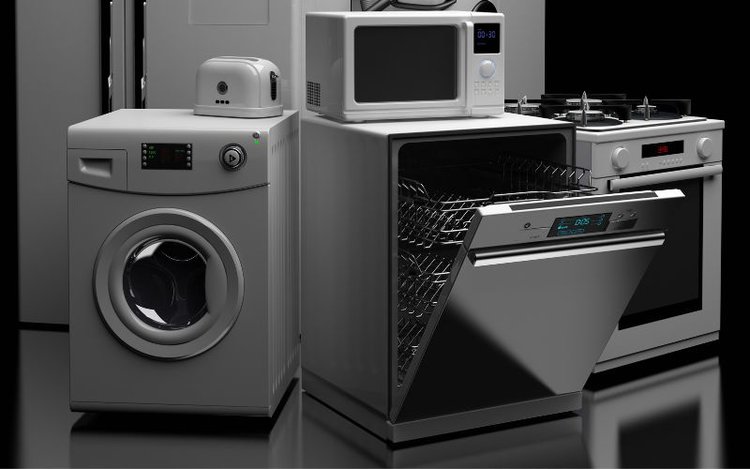
You may notice at times that your lights flicker immediately after you turn on or off powerful devices such as an air conditioner. Such devices require a lot of electricity, and this puts stress on the grid, which can cause a power surge.
External power surge
External power surges stem from occurrences that are outside the household. Things like random lightning strikes, broken power lines, or a blown transformer are common causes of external power surges.
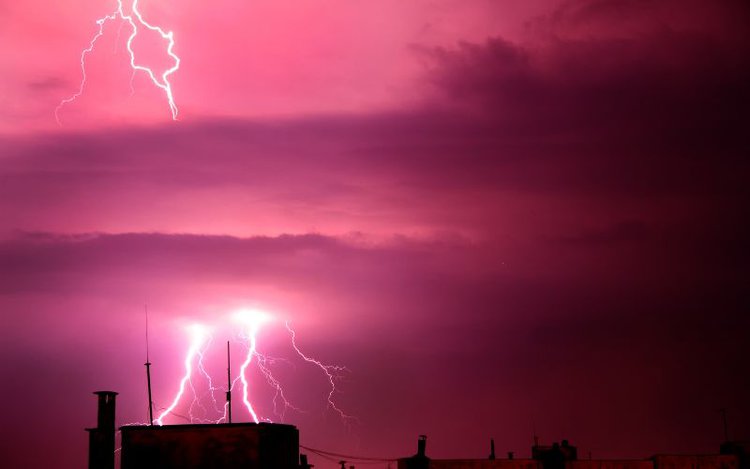
Conclusion
Power surges can be unpredictable. While you can try as much as possible to manage the risks from inside your household, you can not control Mother Nature.
So to protect your television against power surges, get a surge protector.
This is the only way you can prevent damage to your television caused by power surges from both inside and outside your home. Without it, you may be exposing your television to damage down the road.
Meet Vance. He’s a proud dad, a seasoned Electronics Engineer, and an avid tech lover. His proficiency in electronics and troubleshooting skills were instrumental in crafting Pointer Clicker. Vance is passionate about simplifying tech for those who aren’t well-versed in it.



